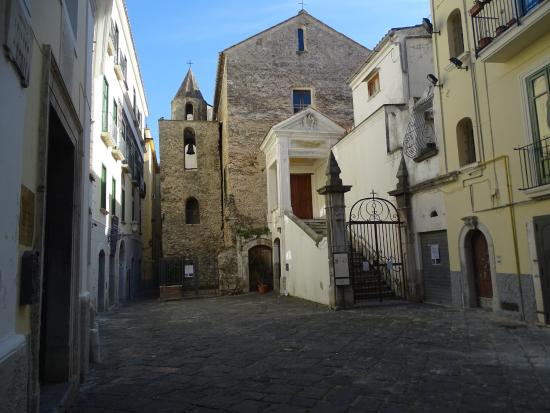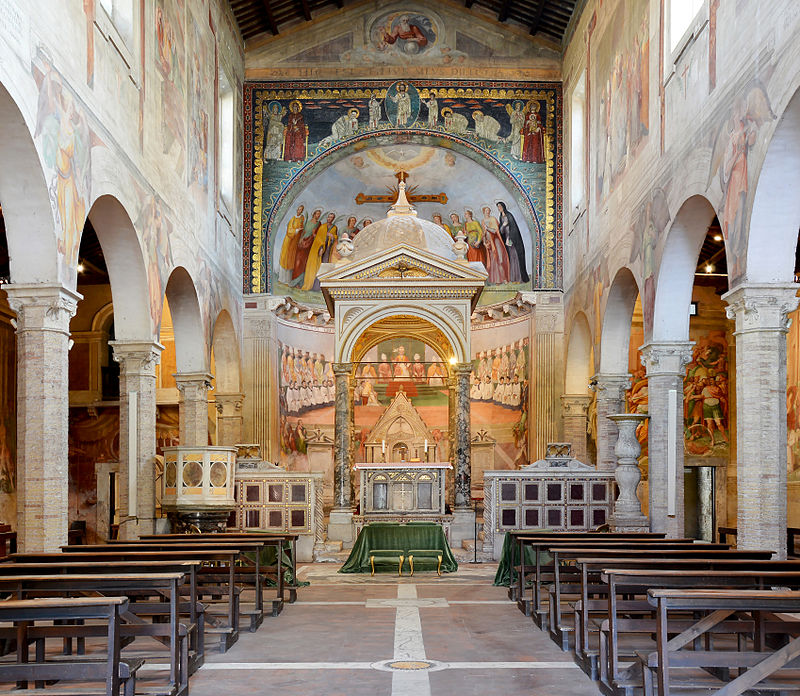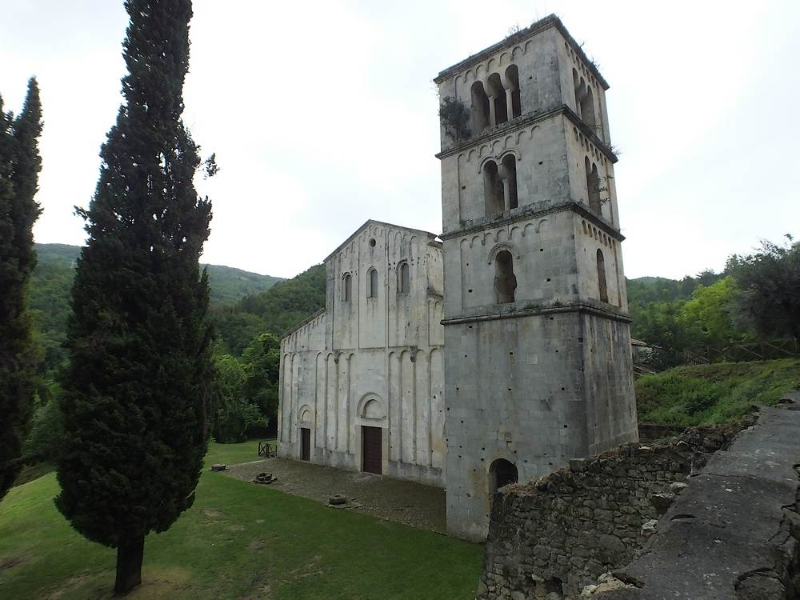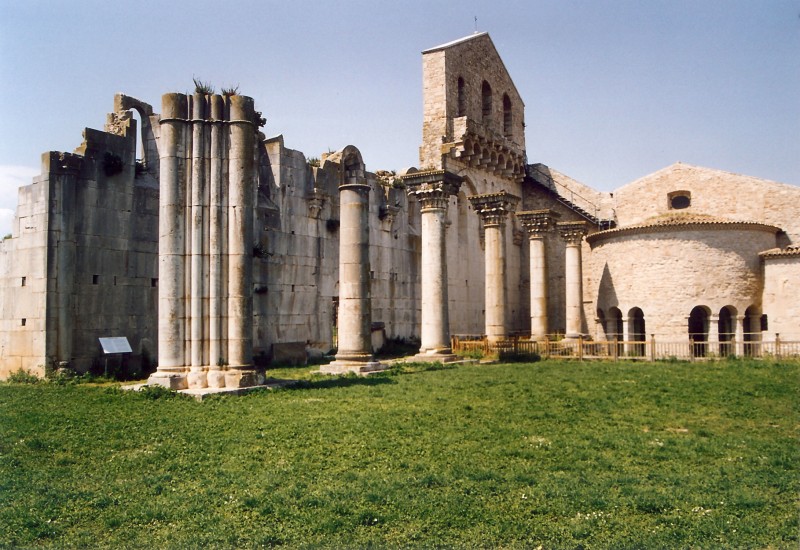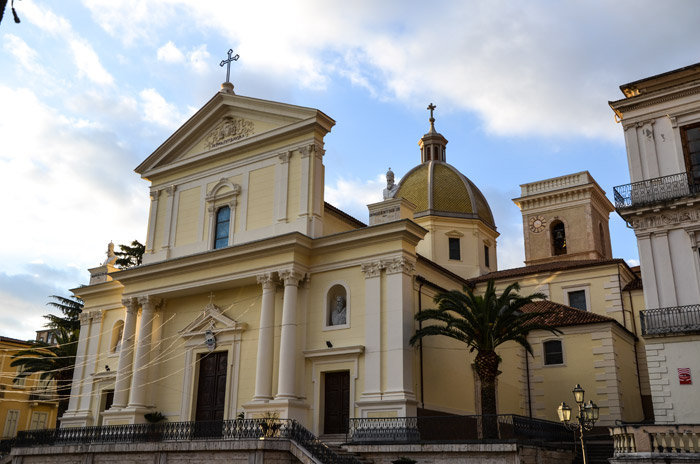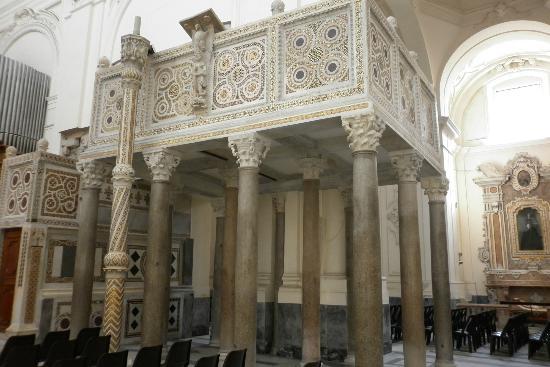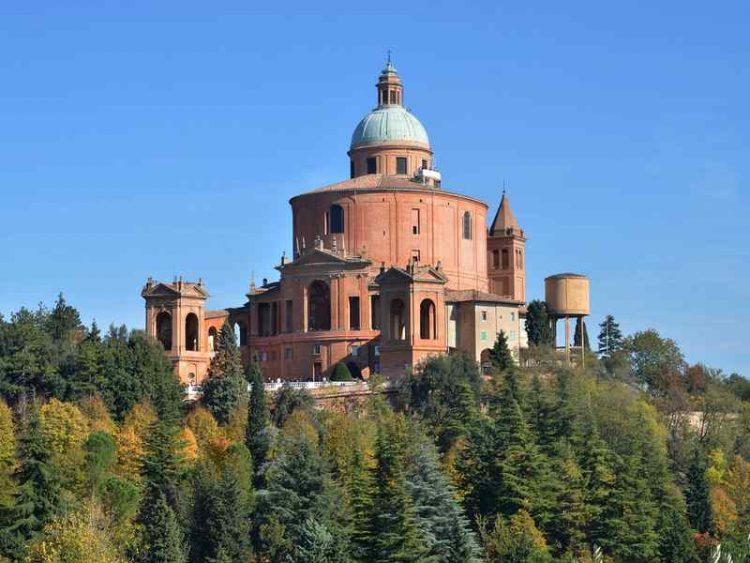The church of S. Pietro a Corte was founded in the Lombard age, in the 8th century A.D., by prince Arechi II, who transferred the capital of Longobardia minor from Benevento to Salerno. The site of the religious structure had been occupied in Roman times by a thermal building, then reused in the first centuries of the Christian era as a place of worship and burial ground. The church stands in the area already called in Roman times ad Curtim, with the function of private chapel of the prince and is dedicated to Saints Peter and Paul.
The foundation pillars of the Palatine Chapel rest on the frigidarium of the Roman baths, dating back to the Flavian-Trajanic age, III century AD, the ancient building was about 13 meters high and was covered by barrel vaults and cross vaults. The environment was originally illuminated by large windows. In the first centuries of the Christian age, then, the building was reused as a religious hall, as evidenced by epigraphs dating from the fifth to the eighth century AD. Under the reign of Arechi, the demolition of the vaults and the division of the thermal building into two rooms separated by a wall septum were carried out. Above it is built the attic of the Palatine Chapel.
The church therefore presents four main stratifications: the Roman thermal building; the early Christian ecclesia; the Lombard palace chapel and finally the medieval public palace. The building, in fact, was the seat of the meetings of Parliament during the thirteenth century, and in it was held the solemn ceremony of the conferment of the degrees of the Medical School of Salerno.
The church is articulated in a single nave concluded by a semicircular apse, realized in substitution of the original rectangular apse during the sixteenth-century restoration. This intervention, carried out around 1576, is realized for the will of the abbot Decio Caracciolo and includes also the construction of the actual staircase of access to the church.
The Romanesque bell tower which rises on the north side of the church, was added to it by will of prince Guaimaro II around 920 A.D., as the Chronicon Salernitanum testifies, although recent excavations have suggested that the present bell tower is of a later period than the X century.
Leaning against a wall of the religious complex there is a small chapel dedicated to S. Anna. The southern wall of the chapel, the one next to S. Pietro, bears a sixteenth-century painting representing S. Anna with the Virgin child and two Saints.
(MIBACT)
